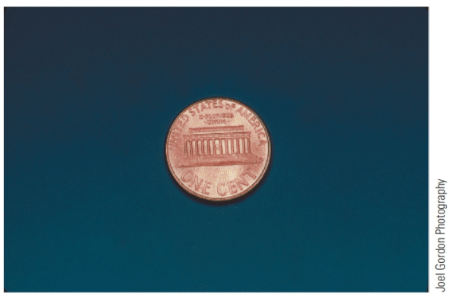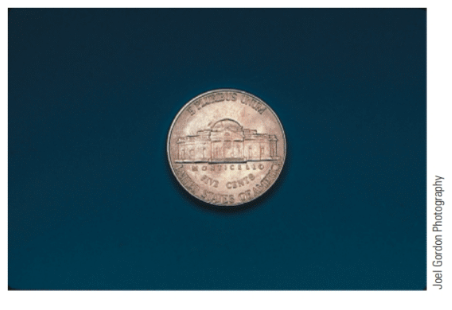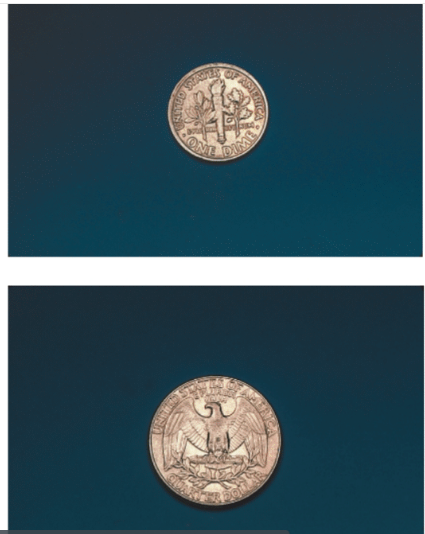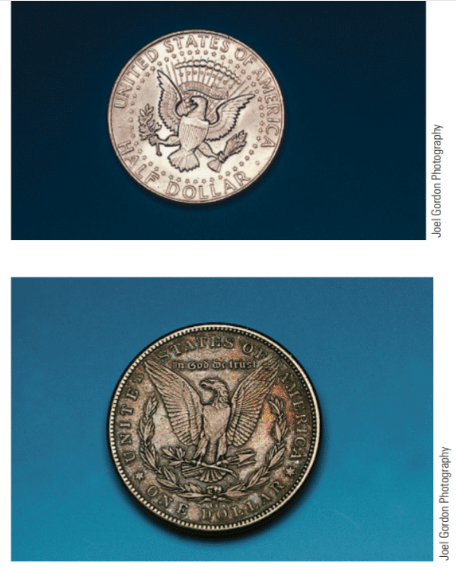
Chemistry In Focus
6th Edition
ISBN: 9781305084476
Author: Tro, Nivaldo J., Neu, Don.
Publisher: Cengage Learning
expand_more
expand_more
format_list_bulleted
Concept explainers
Textbook Question
Chapter 2, Problem 53E
Each of the following coins is photographed to scale. Measure each using a metric ruler (in cm) and record the diameter to the precision reflected in the ruler. Make a simple graph of the value of the coin (x-axis) and the diameter of the coin (y-axis). Is there any correlation between these two quantities? Which coin does not fit the general trend?




Expert Solution & Answer
Trending nowThis is a popular solution!

Students have asked these similar questions
€
+
Suppose the molecule in the drawing area below were reacted with H₂ over a platinum catalyst. Edit the molecule to show what would happen to it. That is, turn
it into the product of the reaction.
Also, write the name of the product molecule under the drawing area.
Name: ☐
H
C=0
X
H-
OH
HO-
H
HO-
-H
CH₂OH
×
Draw the Haworth projection of the disaccharide made by joining D-glucose and D-mannose with a ẞ(1-4) glycosidic bond. If the disaccharide has more than
one anomer, you can draw any of them.
Click and drag to start drawing a
structure.
X
Epoxides can be opened in aqueous acid or aqueous base to produce diols (molecules with two OH groups). In this question, you'll explore the
mechanism of epoxide opening in aqueous acid.
2nd attempt
Be sure to show all four bonds at stereocenters using hash and wedge lines.
0
0
Draw curved arrows to show how the epoxide reacts with hydronium ion.
100 +1:
1st attempt
Feedback
Be sure to show all four bonds at stereocenters using hash and wedge lines.
See Periodic Table
See Hint
H
A
5
F
F
Hr
See Periodic Table See Hint
Chapter 2 Solutions
Chemistry In Focus
Ch. 2 - The volume of a liquid can be measured with a...Ch. 2 - Scientific Notation Express the number 0.0000023...Ch. 2 - Prob. 2SCCh. 2 - Prob. 3SCCh. 2 - Converting Between Units Convert 34.0 cm to...Ch. 2 - Prob. 2.3YTCh. 2 - Extracting Information from Graphical Data The...Ch. 2 - Solving Word Problems...Ch. 2 - Solving Word Problems Involving Units Raised to a...Ch. 2 - Prob. 2.7YT
Ch. 2 - Prob. 2.8YTCh. 2 - Without doing any calculations, determine whether...Ch. 2 - Prob. 1ECh. 2 - Prob. 2ECh. 2 - Prob. 3ECh. 2 - What is the difference between reporting the...Ch. 2 - Prob. 5ECh. 2 - Prob. 6ECh. 2 - Prob. 7ECh. 2 - Prob. 8ECh. 2 - Prob. 9ECh. 2 - What is a conversion factor? Give two examples of...Ch. 2 - Prob. 11ECh. 2 - Identify the decimal part, the exponential part,...Ch. 2 - What is density? Give two examples of possible...Ch. 2 - Since oil floats on water, what can you say about...Ch. 2 - Express each of the following in scientific...Ch. 2 - Express each of the following numbers in...Ch. 2 - Express each of the following in decimal notation:...Ch. 2 - Express each of the following in decimal notation:...Ch. 2 - The circumference of Earth at the equator is...Ch. 2 - The distance from New York to Los Angeles is 2777...Ch. 2 - A can of soda contains 12 fluid ounces. What is...Ch. 2 - A laboratory beaker can hold 150mL. How many fluid...Ch. 2 - A car has a fuel efficiency of 27 miles per...Ch. 2 - A European rental car can travel 17 km on a liter...Ch. 2 - Perform each of the following conversions within...Ch. 2 - Perform each of the following conversions within...Ch. 2 - Prob. 27ECh. 2 - Perform the following conversions between the...Ch. 2 - A pond has a surface area of 1552m2. Convert this...Ch. 2 - An orange has a volume of 54cm3. Convert this...Ch. 2 - Prob. 31ECh. 2 - Prob. 32ECh. 2 - A runner runs at a pace of 8.5 minutes per mile....Ch. 2 - A driver drives an average speed of 58 miles per...Ch. 2 - A sports utility vehicle gets 12 miles per gallon...Ch. 2 - A hybrid electric vehicle (HEV) is a car with both...Ch. 2 - The following graph shows the concentration of an...Ch. 2 - The following graph shows the historical...Ch. 2 - A 28.4-cm3 sample of titanium has a mass of...Ch. 2 - A 1.5-cm3 sample of silicon has a mass of 3.5 g....Ch. 2 - A 5.00-L sample of pure glycerol has a mass of...Ch. 2 - A 3.80-mL sample of mercury has a mass of 51.4g....Ch. 2 - Ethylene glycol (antifreeze) has a density of...Ch. 2 - A thief plans to steal a bar of gold from a womans...Ch. 2 - Prob. 45ECh. 2 - A proton has a radius of approximately 110-13 cm...Ch. 2 - What did Einstein mean when he said, The most...Ch. 2 - Prob. 48ECh. 2 - Prob. 49ECh. 2 - Prob. 50ECh. 2 - Prob. 51ECh. 2 - Consider each of the following balances. Which one...Ch. 2 - Each of the following coins is photographed to...Ch. 2 - Obtain an outdoor thermometer and record the...
Knowledge Booster
Learn more about
Need a deep-dive on the concept behind this application? Look no further. Learn more about this topic, chemistry and related others by exploring similar questions and additional content below.Similar questions
- 03 Question (1 point) For the reaction below, draw both of the major organic products. Be sure to consider stereochemistry. > 1. CH₂CH₂MgBr 2. H₂O 3rd attempt Draw all four bonds at chiral centers. Draw all stereoisomers formed. Draw the structures here. e 130 AN H See Periodic Table See Hint P C Brarrow_forwardYou may wish to address the following issues in your response if they are pertinent to the reaction(s) you propose to employ:1) Chemoselectivity (why this functional group and not another?) 2) Regioselectivity (why here and not there?) 3) Stereoselectivity (why this stereoisomer?) 4) Changes in oxidation state. Please make it in detail and draw it out too in what step what happens. Thank you for helping me!arrow_forward1) Chemoselectivity (why this functional group and not another?) 2) Regioselectivity (why here and not there?) 3) Stereoselectivity (why this stereoisomer?) 4) Changes in oxidation state. Everything in detail and draw out and write it.arrow_forward
- Calculating the pH at equivalence of a titration 3/5 Izabella A chemist titrates 120.0 mL of a 0.7191M dimethylamine ((CH3)2NH) solution with 0.5501 M HBr solution at 25 °C. Calculate the pH at equivalence. The pk of dimethylamine is 3.27. Round your answer to 2 decimal places. Note for advanced students: you may assume the total volume of the solution equals the initial volume plus the volume of HBr solution added. pH = ☐ ✓ 18 Ar Boarrow_forwardAlcohols can be synthesized using an acid-catalyzed hydration of an alkene. An alkene is combined with aqueous acid (e.. sulfuric acid in water). The reaction mechanism typically involves a carbocation intermediate. > 3rd attempt 3343 10 8 Draw arrows to show the reaction between the alkene and hydronium ion. that 2nd attempt Feedback 1st attempt تعمال Ju See Periodic Table See Hint F D Ju See Periodic Table See Hintarrow_forwardDraw the simplified curved arrow mechanism for the reaction of acetone and CHgLi to give the major product. 4th attempt Π Draw the simplified curved arrow mechanism T 3rd attempt Feedback Ju See Periodic Table See Hint H -H H -I H F See Periodic Table See Hintarrow_forward
- Select the correct reagent to accomplish the first step of this reaction. Then draw a mechanism on the Grignard reagent using curved arrow notation to show how it is converted to the final product. 4th attempt Part 1 (0.5 point) Select the correct reagent to accomplish the first step of this reaction. Choose one: OA Mg in ethanol (EtOH) OB. 2 Li in THF O C. Li in THF D. Mg in THF O E Mg in H2O Part 2 (0.5 point) Br Part 1 Bri Mg CH B CH, 1 Draw intermediate here, but no arrows. © TE See Periodic Table See Hint See Hint ין Harrow_forwardSelect the product for the following reaction. HO HO PCC OH ○ OH O HO ○ HO HO HOarrow_forward5:45 Х Select the final product for the following reaction sequence. O O 1. Mg. ether 2.D.Oarrow_forward
- Based on the chart Two similarities between the molecule with alpha glycosidic linkages. Two similarities between the molecules with beta glycosidtic linkages. Two differences between the alpha and beta glycosidic linkages.arrow_forwardplease help fill in the tablearrow_forwardAnswer F pleasearrow_forward
arrow_back_ios
SEE MORE QUESTIONS
arrow_forward_ios
Recommended textbooks for you
 Chemistry & Chemical ReactivityChemistryISBN:9781337399074Author:John C. Kotz, Paul M. Treichel, John Townsend, David TreichelPublisher:Cengage Learning
Chemistry & Chemical ReactivityChemistryISBN:9781337399074Author:John C. Kotz, Paul M. Treichel, John Townsend, David TreichelPublisher:Cengage Learning Chemistry: Principles and PracticeChemistryISBN:9780534420123Author:Daniel L. Reger, Scott R. Goode, David W. Ball, Edward MercerPublisher:Cengage Learning
Chemistry: Principles and PracticeChemistryISBN:9780534420123Author:Daniel L. Reger, Scott R. Goode, David W. Ball, Edward MercerPublisher:Cengage Learning ChemistryChemistryISBN:9781305957404Author:Steven S. Zumdahl, Susan A. Zumdahl, Donald J. DeCostePublisher:Cengage Learning
ChemistryChemistryISBN:9781305957404Author:Steven S. Zumdahl, Susan A. Zumdahl, Donald J. DeCostePublisher:Cengage Learning
 Introductory Chemistry: An Active Learning Approa...ChemistryISBN:9781305079250Author:Mark S. Cracolice, Ed PetersPublisher:Cengage Learning
Introductory Chemistry: An Active Learning Approa...ChemistryISBN:9781305079250Author:Mark S. Cracolice, Ed PetersPublisher:Cengage Learning

Chemistry & Chemical Reactivity
Chemistry
ISBN:9781337399074
Author:John C. Kotz, Paul M. Treichel, John Townsend, David Treichel
Publisher:Cengage Learning

Chemistry: Principles and Practice
Chemistry
ISBN:9780534420123
Author:Daniel L. Reger, Scott R. Goode, David W. Ball, Edward Mercer
Publisher:Cengage Learning

Chemistry
Chemistry
ISBN:9781305957404
Author:Steven S. Zumdahl, Susan A. Zumdahl, Donald J. DeCoste
Publisher:Cengage Learning


Introductory Chemistry: An Active Learning Approa...
Chemistry
ISBN:9781305079250
Author:Mark S. Cracolice, Ed Peters
Publisher:Cengage Learning

Measurement and Significant Figures; Author: Professor Dave Explains;https://www.youtube.com/watch?v=Gn97hpEkTiM;License: Standard YouTube License, CC-BY
Trigonometry: Radians & Degrees (Section 3.2); Author: Math TV with Professor V;https://www.youtube.com/watch?v=U5a9e1J_V1Y;License: Standard YouTube License, CC-BY